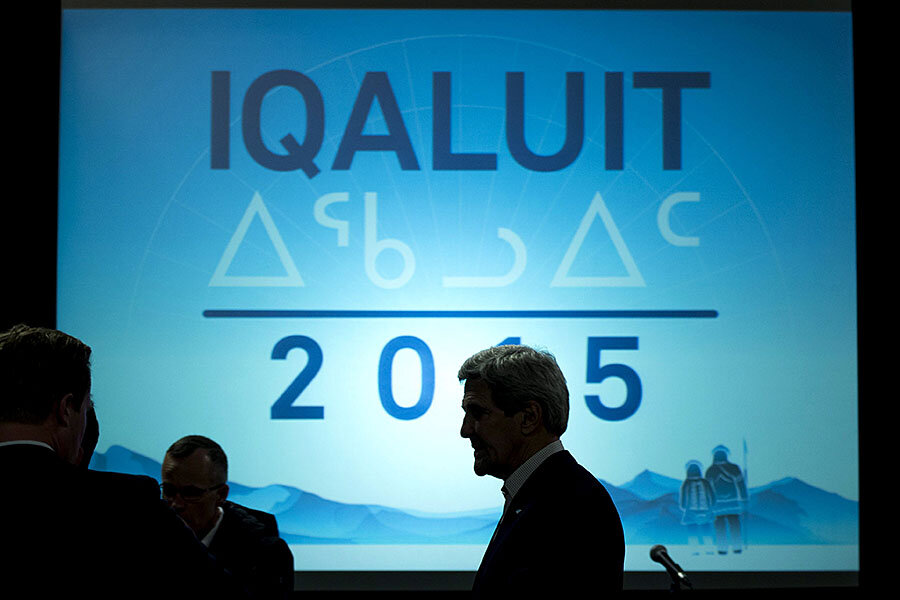Tensions grow in Arctic Council as US takes control
Loading...
The United States is set to take over the two-year chairmanship of the Arctic Council, and although there is a lot of uncertainty over how the U.S. will wield its influence, it will be taking the helm for a period of time that could see much more activity north of the Arctic Circle.
The Arctic Council is an international forum consisting of the eight nations that have territory in the Arctic – Canada, the U.S., Denmark (Greenland), Finland, Iceland, Norway, Sweden, and Russia. Up until recently it has been held up as a model of international cooperation. The members worked together on disaster response and environmental stewardship, leaving politics out of the council, all in the name of peace.
But Canadian officials lambasted Russia’s involvement in Ukraine during its two-year tenure (2013-2015), using its platform as Council Chair. With western sanctions on top Russian officials, in February Canada cancelled the Arctic Showcase event in Ottawa that was supposed to be held on April 23 because it did not want sanctioned Russian officials to attend. (Related: BG Deal May Leave Shell’s Arctic Ambitions In Limbo)
Russia has retaliated. Russia’s Foreign Minister Sergei Lavrov has attended every meeting since 2004 but chose to sit this one out in protest. Deputy Prime Minister Dmitri Rogozin, who has been targeted by western sanctions, visited Svalbard in mid-April, an archipelago that belongs to Norway. Norway protested his visit, and it was seen as a provocation ahead of the Arctic Council summit in Canada. Russia has also stepped up air patrols along its border with Norway in recent months, aggressive moves that have increased since its conflict with the West over Ukraine erupted in 2014.
The tensions threaten to disrupt what has up until now been a cordial forum. That could affect cooperation in the far north at a time when the Arctic is becoming more relevant than ever.
Due to melting sea ice, the Arctic is opening up. Shipping in the far north is increasing. The prospect of drilling for oil and gas is also spurring greater interest in the Arctic. Russia is already producing from the first offshore oil field in the Arctic. Gazprom Neft, a state-owned oil firm, plans to double production at Russia’s lone Arctic offshore field this year. In 2014, the Prirazlomnoye field produced more than 2.5 million barrels of oil. (Related: What Happens To US Shale When The Easy Money Runs Out?)
On the U.S. side, Royal Dutch Shell has come up short thus far in its efforts to produce in the American Arctic. It is considering a return this summer pending regulatory approval.
But unlike Canada, which put a lot of focus on energy development in the Arctic, the Obama administration appears to be deprioritizing Arctic oil in favor of environmental stewardship. The administration, which was just handed the baton for leader of the Arctic Council, has laid out three objectives for its two-year term:
1. Improving living conditions for Arctic communities (with a focus on renewable energy, public health, and infrastructure)
2. Arctic Ocean safety, security and stewardship (including search and rescue; oil spill response; more marine protected areas)
3. Addressing the impacts of climate change (specifically on black carbon and climate adaptation measures) (Related: EU Could End Russian Gas Bullying In One Fell Swoop)
Much to the chagrin of Alaska Senator Lisa Murkowski, the powerful Republican Senator that is pushing for less red tape on Shell’s drilling plans for the Arctic, the Obama administration through Secretary of State John Kerry will emphasize climate change during its term instead of oil and gas development.
Nevertheless, the Arctic Council is not a particularly powerful forum. It also operates on a basis of consensus, taking only minor steps forward every two years. The proudest achievements to date are agreements on oil spill response and rescue missions. That is not to say that the work is not important. It just means that when it comes to oil and gas development, the show is elsewhere.
The U.S. Department of Interior, and not the Arctic Council delegation, holds the cards over whether or not oil drilling will proceed. Beyond that, it will be up to the executives at Shell to determine whether or not the company wants to spend the money on another risky Arctic mission.
By Nick Cunningham of Oilprice.com
More Top Reads From Oilprice.com:
- A Closer Look At The World’s 5 Biggest Oil Companies
- Oil Price War May Benefit Both US Shale And Saudi Arabia
- Wall Street Bets On Oil Price Rally
Original article: http://oilprice.com/Energy/Energy-General/U.S.-To-Lead-A-Fractured-Arctic-Council-For-The-Next-Two-Years.html
Source: http://oilprice.com/





